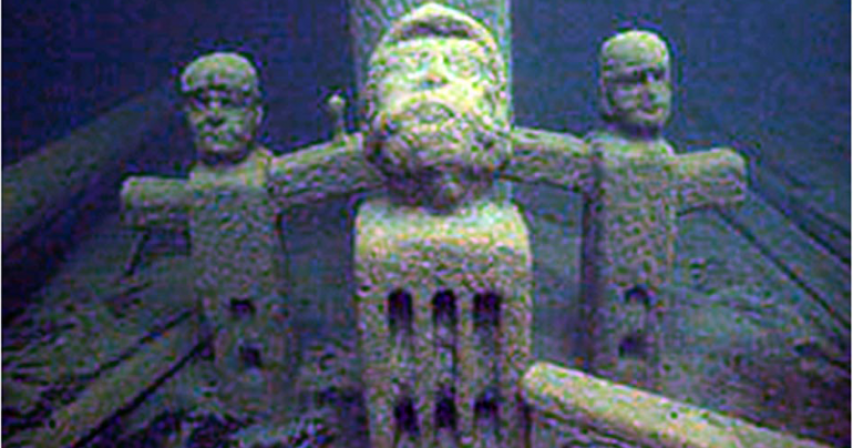An Undersea Mystery: The Accidental Discovery of the Ghost Ship in the Baltic Sea
- 3 years ago

By Wu Mingren
The Ghost Ship is a shipwreck that was discovered in the middle of the Baltic Sea. This ship was found by accident in 2003, and the first full-scale archaeological expedition to study it was launched in 2010. Through investigation of the Ghost Ship, certain pieces of information regarding this shipwreck have been brought to light. These include the period during which the ship was used, its dimensions, and the type of ship that it was. Nevertheless, other questions remain, such as the identity of the ship, the flag under which it sailed, and cause of the ship’s sinking.
The Ghost Ship is just one of many shipwrecks that have been preserved in the Baltic Sea. This sea covers an area of about 400 000 square kilometers (248,548 miles), and, according to some estimates, contains as many as 100 000 shipwrecks. These wrecks come from various time periods, ranging from the Mesolithic until the modern period. For example, a boat made from a hollow tree trunk has been dated to 5200 BC, and is possibly one of the oldest wrecks the Baltic Sea.
Other vessels that have been found/are known to have sunk in the Baltic Sea include ships from the Viking Age (8th – 11th centuries AD), the Danish-Lübeck fleet off Visby (16th century AD) and ships sunk during the Second World War (1939 – 1945).

The naval Battle of the Sound took place on 8 November 1658 during the Dano-Swedish War. ( Public Domain )
The main factor for the preservation of so many shipwrecks (especially wooden ones) in the Baltic Sea is its low salinity. In large oceans, seawater typically has a salinity of 3.5%. The Baltic Sea, by contrast, has a salinity of 0.06 – 0.15%. The low salinity of its water means that the Baltic Sea is not a suitable habitat for the shipworm, animals that are responsible for causing major damage to wooden vessels. In addition, there is almost no tidal movement in the Baltic Sea, which also contributes to the preservation of the sunken ships.

A bartmann jug found on the site of the Dalarö-wreck, which was a 17th-century ship laying in the waters off Edesön near Dalarö, Sweden. (Jens Lindström/ CC BY 3.0)
Although the Baltic Sea is known to hold a great amount of shipwrecks, the team that discovered the Ghost Ship (Deep Sea Productions and Marin Mätteknik) were not actually looking for one. In fact, they were looking for a Swedish spy / reconnaissance plane that vanished in 1952, when their side-scan sonar detected a shipwreck.
Further investigation by the team revealed that it was an almost intact ship. In the following years, several expeditions visited the shipwreck, though it was only in 2010 that a full-scale archaeological expedition was undertaken to study the Ghost Ship.

A Swedish spy / reconnaissance plane. Photo taken in 1951. ( Public Domain )
From the investigations that have been carried out it was found that the Ghost Ship was 26 m long (25 ft.), 8 m wide (26 ft.), and had a loading capacity of 100 lasts (280 metric tons). It has been determined that the Ghost Ship was from the 17th century AD, perhaps around 1650, and that it was a merchant ship. The researchers have also concluded that the Ghost Ship was a fluyt, a type of ship developed by the Dutch towards the end of the 16th century.

Dutch fluyt, 1677. ( Public Domain )
Still, there are other questions surrounding the Ghost Ship that have yet to be answered. For example, it is unclear as to which flag the Ghost Ship sailed under. During the middle of the 17th century thousands of Dutch merchant ships were sailing the Baltic Sea on trade missions. As the Ghost Ship is a fluyt, it may be reasonable to guess that it belonged to the Dutch. Nevertheless, another ship, known as the Vasa, has been used as a counter-argument.
The Vasa, though built in the Dutch tradition by Dutch ship-builders, was in fact sailing under the Swedish flag. Hence, it may also be possible that the Ghost Ship, despite being a Dutch fluyt, may have been under the command of another nation as well.

Vasa's Port Bow. ( CC BY-SA 3.0 )
Comments